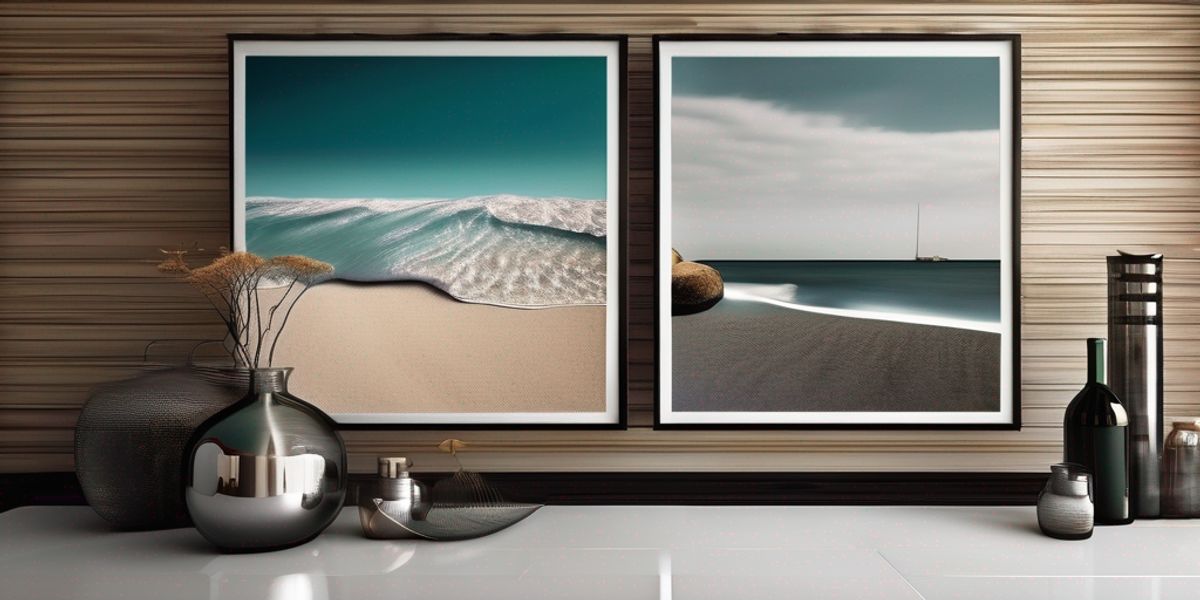Still life art, a genre characterized by its depiction of inanimate subjects, has a rich history that seamlessly integrates into modern interior decorating. Its timeless elegance enhances spaces by adding depth, texture, and emotional resonance, making it a popular choice among designers and homeowners alike. This article explores how still life art can be utilized effectively in various room settings, its psychological impact, and the latest trends in its use in contemporary interiors.
Key Takeaways
- Still life art offers a unique blend of historical richness and contemporary relevance, making it a versatile choice for interior decorating.
- It serves as a powerful tool to create focal points, enhance themes, and balance color and texture in a room.
- Selecting the right still life artwork involves considering the room’s size, lighting, and existing decor to ensure a harmonious design.
- Incorporating still life art in different room settings can positively influence mood, cognitive functions, and overall atmosphere.
- Maintaining still life artworks is crucial for their preservation, involving regular cleaning, protection from damage, and occasional professional restoration.
Defining Still Life Art
Historical Origins and Evolution
Still life art, as a distinct genre, traces its roots back to ancient times, with significant developments during the Renaissance. It became particularly prominent in the 17th century in the Netherlands. The genre has evolved to include a variety of mediums and styles, reflecting cultural and artistic shifts.
Key Characteristics
The essence of still life art lies in its focus on inanimate subjects, typically commonplace objects which may be either natural (like flowers and fruits) or man-made (like glasses and books). The arrangement of these objects is crucial, often conveying a deeper symbolic meaning or a display of technical skill.
Prominent Artists and Works
Several artists have been pivotal in defining the still life genre. Notable figures include Juan Sánchez Cotán and Francisco de Zurbarán from Spain, and Dutch masters like Willem Kalf and Jan Davidsz de Heem. Their works continue to influence modern still life compositions, making them a staple in both historical studies and contemporary practices.
The Role of Still Life Art in Interior Design
Creating Focal Points
Still life art serves as a powerful focal point in any room, drawing the eye and anchoring the space. It can be strategically placed to guide the viewer’s attention and create a visual journey around the room.
Enhancing Room Themes
Still life artworks can enhance the theme of a room by reflecting its aesthetic and emotional tone. For example, a classic fruit bowl painting can amplify a traditional kitchen, while a modern abstract still life might complement a contemporary living room.
Balancing Color and Texture
Still life art is particularly effective in balancing color and texture within a room. It can introduce contrast or harmony, depending on the existing decor and desired atmosphere. This balance is crucial for creating a cohesive interior design.
Choosing the Right Still Life Artwork
Considering Room Size and Lighting
Selecting the right still life artwork involves considering the size and lighting of the room where it will be displayed. A larger room might benefit from a larger, more detailed piece, while a smaller space could be overwhelmed by the same artwork. Lighting also plays a crucial role; natural light can enhance the colors and details of a painting, whereas artificial lighting might require different considerations.
Selecting Frames and Mounts
The choice of frame and mount can significantly affect the presentation of still life art. Opt for frames that complement both the artwork and the room’s decor. Consider the following materials and styles:
- Wooden frames: Classic and versatile
- Metal frames: Modern and sleek
- No frame: A contemporary look that allows the artwork to blend seamlessly with the surroundings
Complementing Existing Decor
To integrate still life art effectively into your home, ensure that it complements the existing decor. This might involve matching themes, colors, or even the mood of the room. For instance, a vibrant floral still life could add a touch of freshness to a minimalist room, aligning well with the minimalist enthusiasts.
Incorporating Still Life Art in Various Room Settings
Living Rooms
Still life art can transform a living room by adding depth and interest. Select pieces that complement the overall color scheme and style of the room. Consider symmetrical arrangements for a harmonious look or an asymmetrical setup to create a more dynamic atmosphere.
Bedrooms
In bedrooms, still life art should evoke calm and relaxation. Opt for softer colors and simple frames to enhance the peaceful ambiance. Artworks featuring elements from nature can be particularly soothing.
Offices and Study Areas
For offices and study areas, still life art can help stimulate focus and creativity. Choose artworks with vibrant colors or intriguing compositions to inspire and energize the space. A well-placed piece can also serve as a conversation starter during meetings.
Tip: When placing art in any room, consider the lighting conditions and the viewing angle to ensure the artwork is shown to its best advantage.
The Psychological Impact of Still Life Art
Influence on Mood and Atmosphere
Still life art significantly influences the mood and atmosphere of a room. The presence of serene and calming images, like a bowl of fresh fruit or a tranquil floral arrangement, can create a soothing environment. These elements can subtly shift a viewer’s emotional state, enhancing feelings of relaxation and peace.
Cognitive Benefits
Engaging with still life art can also offer cognitive benefits. Observing and interpreting the details in these artworks encourages mental engagement and stimulates cognitive processes. This form of art appreciation helps in sharpening observational skills and enhances attention to detail.
Emotional Resonance
The emotional resonance of still life art is profound. Certain images may evoke personal memories or stir feelings that connect an individual to the artwork on a deeper level. This connection can foster a sense of comfort and personal reflection, making still life art a powerful tool in interior design.
Maintaining and Preserving Still Life Artworks
Regular Cleaning and Care
Regular cleaning and care are essential to maintain the visual appeal and longevity of still life artworks. Use a soft, dry brush or a microfiber cloth to gently remove dust. Avoid harsh chemicals or abrasive materials that can damage the artwork’s surface.
Protecting from Environmental Damage
To protect your still life artworks from environmental damage, keep them away from direct sunlight, high humidity, and extreme temperatures. It’s crucial to monitor the environment where the art is displayed, using dehumidifiers or air conditioners as needed.
Professional Restoration Tips
If a still life artwork requires restoration, it’s advisable to consult with a professional conservator. They can provide expert advice and services to restore the artwork to its original condition. For minor issues, such as small scratches or surface cleaning, gentle methods should be used to avoid further damage.
Trends in Still Life Art for Modern Interiors
Contemporary Artists to Watch
The modern still life scene is vibrant with emerging artists who are redefining traditional concepts. Key figures include Alia Bright and Theo Carter, whose works blend classical techniques with modern themes. Their innovative approaches are setting the stage for the future of still life in interior design.
Innovative Display Techniques
Innovative display techniques are transforming how still life art is viewed and experienced in contemporary spaces. Utilizing digital frames and interactive installations, these methods allow for a dynamic interaction between the artwork and the viewer, enhancing the overall aesthetic appeal.
Integration with Modern Technology
The integration of modern technology with still life art is not just about display but also about creation. Artists are increasingly using digital tools to create hyper-realistic and layered compositions that challenge traditional boundaries. This trend is particularly notable in the rise of augmented reality experiences, where viewers can engage with artworks in a completely immersive environment.
Conclusion
Still life art, with its rich history and timeless appeal, continues to be a significant choice for interior decorating. It not only enhances the aesthetic value of a space but also adds a layer of cultural depth and personal expression. Whether through classic or contemporary interpretations, still life artworks invite viewers to pause and reflect, making them an enduring favorite in home and office environments. Incorporating still life art into your decor not only beautifies your surroundings but also connects you to a long tradition of artistic excellence and contemplation.
Frequently Asked Questions
What is still life art?
Still life art refers to a genre of painting or photography that focuses on inanimate subjects, typically commonplace objects which may be either natural (flowers, food, plants, rocks, or shells) or man-made (glasses, books, vases, jewelry, coins, pipes, and so on).
How can still life art enhance interior decor?
Still life art can add visual interest and a sophisticated touch to a room, create focal points, enhance the room’s theme, and balance color and texture, making the space more appealing and harmonious.
What should I consider when choosing still life artwork for my home?
Consider the size of the room, the lighting, the style and color scheme of the existing decor, and how the artwork’s frame and mount will complement these elements.
Where is the best place to hang still life art in a home?
Still life art can be effectively displayed in various settings such as living rooms, bedrooms, and offices. Choose locations that allow the artwork to serve as a focal point and complement the overall decor.
What are the benefits of having still life art in a room?
Still life art can positively influence the mood and atmosphere of a room, provide cognitive stimulation, and evoke emotional responses, enhancing the overall living or working environment.
How do I maintain and preserve still life art?
Maintain still life artworks by regular cleaning, protecting them from environmental damage such as sunlight and humidity, and considering professional restoration if necessary to preserve their condition and appearance.

